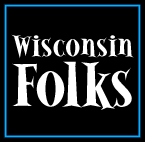|


Woodland Flutes
Bayfield, WI
Vocabulary
Assimilate: To take on the ways of the majority cultural group.
Composing: Writing.
Fipple: Part of a two-chamber flute. It includes the barrier between the two chambers that has a narrow passage for the air. A fipple also includes the typically square hole on the top of the
flute that the sound comes out of.
Improvisation: To make up or invent.
Mandolin: A stringed instrument usually with a pear-shaped body.
Mariachi: (sounds like, ma-ree-AH-chee) Strolling Mexican musicians who play in a combo with violins, guitars, basses and trumpets.
Migrant agricultural work: (sounds like, MY-grint, and a-gruh-CUHL-chur-al) Moving regularly in order to find work in harvesting crops, such as apples, grapes, cotton.
Ojibwe: Anishinabe Indians who migrated from the St. Lawrence River to Lake Superior, settling in what’s now north-central United States and south-central Canada.
Reservation: Land set aside for a group of people.
Second-shift: From about 4PM until midnight.
Seldom: Not very often.
Shriller: More high pitched.
back to top
Journal Questions
 Describe the place where you like to go to make music. Describe the place where you like to go to make music.
back to top
Resources for Teachers
 Mariachi music was an early inspiration for Frank. Explore this type of music with your students with the help of the materials
on Mariachi Education Resources. Mariachi music was an early inspiration for Frank. Explore this type of music with your students with the help of the materials
on Mariachi Education Resources.
 “Native Journeys” is part of the video
series, Wisconsin Stories, co-produced by Wisconsin Public Television and Wisconsin State Historical Society. The on-line resources that accompany “Native Journeys” are extensive. “Native Journeys” is part of the video
series, Wisconsin Stories, co-produced by Wisconsin Public Television and Wisconsin State Historical Society. The on-line resources that accompany “Native Journeys” are extensive.
 Anishinabe - Ojibwe - Chippewa: Culture of an Indian Nation,
from the National Endowment for the Humanities’ EDSITEment, provides extensive resources and lesson plans on the Ojibwe Nation, designed for 3rd-5th grades. Anishinabe - Ojibwe - Chippewa: Culture of an Indian Nation,
from the National Endowment for the Humanities’ EDSITEment, provides extensive resources and lesson plans on the Ojibwe Nation, designed for 3rd-5th grades.
 There’s a photo of Frank included in the book Indian Nations of Wisconsin: Histories of Endurance and Renewal
by Patty Loew (Wisconsin Historical Society Press, 2001). Look on page 72 and on the cover! There’s a photo of Frank included in the book Indian Nations of Wisconsin: Histories of Endurance and Renewal
by Patty Loew (Wisconsin Historical Society Press, 2001). Look on page 72 and on the cover!
 The International Native American Flute Association’s site will inform you about the
issues important to scholars and musicians of Native American flutes. The International Native American Flute Association’s site will inform you about the
issues important to scholars and musicians of Native American flutes.
back to top
Resources for Students
 Frank is from Red Cliff. Not sure where that is? Find it on this map
from Wisconsin Stories. Frank is from Red Cliff. Not sure where that is? Find it on this map
from Wisconsin Stories.
 Flutes are just one of several musical instruments important in
Woodland Indian traditions. The Milwaukee Public Museum will tell you about flutes, drums, shakers and more. Flutes are just one of several musical instruments important in
Woodland Indian traditions. The Milwaukee Public Museum will tell you about flutes, drums, shakers and more.
 Do you know the different parts of a Woodland flute? This site on Native Flute
Constructions will show you! Do you know the different parts of a Woodland flute? This site on Native Flute
Constructions will show you!
 There’s lots to know about Ojibwe culture and history. Read excerpts from the Chippewa Valley Museum’s
Paths
of the People. Explore the Milwaukee Public Museum’s Ojibwe Indian Country. There’s lots to know about Ojibwe culture and history. Read excerpts from the Chippewa Valley Museum’s
Paths
of the People. Explore the Milwaukee Public Museum’s Ojibwe Indian Country.
back to top
Credits
Text written by Rick March, edited by Anne Pryor and Jamie Yuenger.
Sources consulted include The Anishinabe: An Overview Unit of the History and Background of the Wisconsin Ojibwe Indian Tribe, Wisconsin Department of Public Instruction, Bulletin No. 6479.
 |


